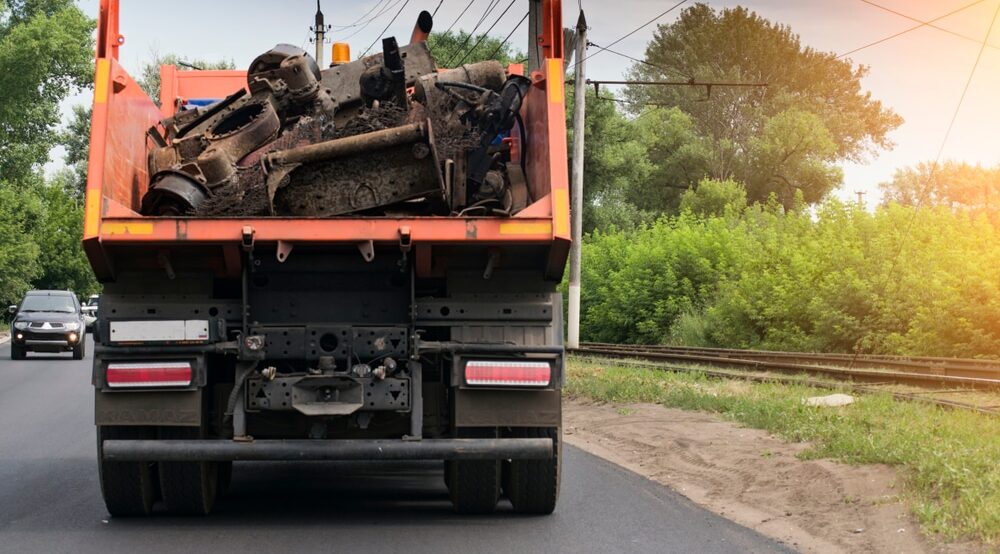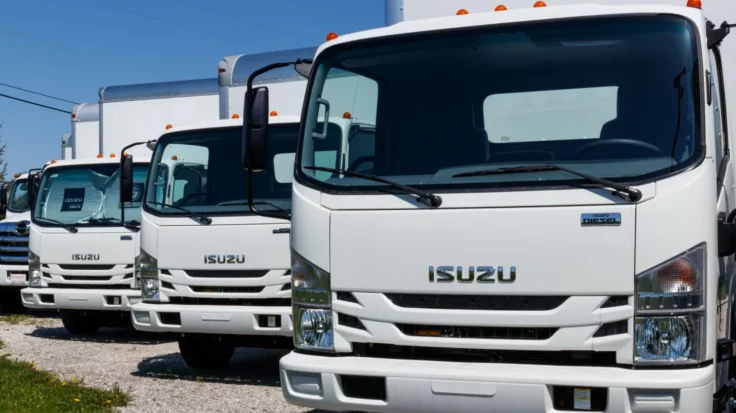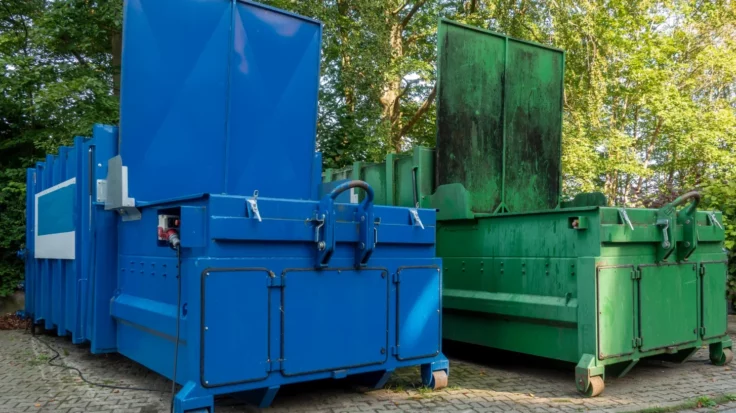Fortunately, it won’t take you months to learn how to start a junk removal business. And best of all, once you launch, you’ll be your own boss no matter your age, education, or past experience.
The advantages and disadvantages of a junk removal business
But before you start researching how to start a junk removal business, consider these advantages and disadvantages.
Advantages
Income potential
Perhaps most importantly, the income potential is high if you work in an area with demand. According to Haulaway Cash, once you deduct your expenses, you can expect to earn $58/hr as per the national average. Working five days a week at eight hours per day, you’ll earn $116,000/year. Once you scale your business, your income will only increase.
Low barrier to entry
With a low barrier to entry, the junk removal business is easy to break into. Compared to other businesses, the start-up costs are minimal, no special skills are required, and it’s fairly easy to scale once your business takes off.
Easy to scale
When you want to take on bigger jobs or have multiple jobs running simultaneously, you’re ready to scale. To grow, you simply need to add a truck and hire more employees.
Ability to transition off the truck
Once your junk removal business is running smoothly, you can hire a manager to ride on the track and manage jobs. Then, you can step back from the day-to-day and let the business just run.
Disadvantages
Fluctuating demand
But junk removal is a seasonal business with fluctuating demand. You may be hauling 24-7 in May, but in December, you could be sitting around doing nothing. You need to therefore plan your income distribution accordingly.
Not subscription based
Also, junk removal jobs are generally one-offs as clients don’t move or reorganize their houses often. If a client calls you again in five years, consider yourself lucky.
Because junk removal, unlike the lawn care business, is not subscription-based, you need to continuously advertise and maintain ongoing marketing campaigns to attract new clients. Your income, especially in the beginning, will therefore be less consistent.
Competition
In addition, with low barriers to entry, many aspiring entrepreneurs jump into the industry, hoping to make a quick buck. With more competition, you need to spend more money on advertising, and you may need to slash your prices periodically to compete. But not all the competition sticks around long-term. If you work hard and scale quickly, you can eventually dominate your local market.
Heavy labor
And finally, junk removal is not for everybody. It’s a dirty, dusty job that requires strength and endurance. But if you can push through, eventually, you can step out of the truck and manage the whole operation from the comforts of a cushy office.
The cost of starting a junk removal business
Startup costs are low, especially if you own a truck. If not, this will be your biggest investment.
A junk removal truck
To get started cheaply, purchase a used pickup truck and trailer. The older the truck (before 2008), the cheaper it will be. For example, a 2004 Nissan Frontier, LE costs around $8,998. When you’re ready for something bigger, a used box truck (i.e. U-Haul) is the next best option. Eventually, consider upgrading to a dump truck. It’s the most practical vehicle for the long-term as it can hold a lot of junk, which can simply be dumped into a landfill without much additional labor.
Registering your business
The fees and taxes for registering your business are dependent on the state you live in and the type of business you set up (i..e LLC, sole proprietorship, s-corp). In California, for example, it costs $85 to establish an LLC, plus $20 to file a statement of information. A small business license is between $50 and $100.
Supplies
And unless you have the following supplies in your garage, you’ll need to purchase the necessary equipment to take apart and haul away the junk, including:
- A large shovel
- A hand truck
- A screwdriver set
- A sledgehammer
- A mesh tarp (for an open truck or trailer)
- Heavy-duty garbage bags
- Protective masks (for dusty jobs)
- A broom & dustpan (for clean-up)
Marketing
Before you become a local household name, you must advertise your services using flyers, social media, and paid advertisements. Determine where your target population hangs out (i.e., social media vs. the supermarket) and advertise accordingly.
Nowadays, Google My Business and websites have replaced the yellow pages. If you want to compete, you need a simple website to display your services and contact info as well as an “About us.” A simple website costs around $1000.
This is a small price to pay. Because once you’ve built a website and registered your business with Google, your prospects will have a way to find you!
When they search for junk removal through Google, your business will show up! And if you use Workiz’s business management and scheduling software, you can even add a “Book Now” option. Because of Workiz’s exclusive integration with Google Local Service Ads, once your client books, the new job will be added to your Workiz schedule automatically. Remember, your prospects like booking jobs quickly and easily!
Dumping costs
Finally, landfills charge for dumping the junk. Contact your local landfills so you can calculate these costs into your expenses. On the plus side, you can sell scrap metal to offset these costs.
Field Management Software
Most service businesses use business management software to automate the standard processes of running their business, including:
- Scheduling and dispatching
- Invoicing and online payments
- Automated customer alerts, updates, and reminders
- Online and chatbot booking
- Employee tracking
- In-app service phone system
- Route planning
- Back office accounting and systems integration
Junk removal businesses are quickly replacing their clipboards with tablets and smartphones to run more efficient and professional businesses. While the costs are low, the benefits of field management software are tremendous.
3 steps to start a junk removal business
To figure out how to start a junk removal business, begin with the following 3 steps.
1. Business and marketing plan
Writing a business plan will help you to focus your ideas and plans so you can determine if your business is viable. As you build your business plan, you’ll need to answer the following questions:
- What is your mission statement?
- What are your future goals for the business?
- What are your upfront costs, and how do you plan to cover them?
- Who is your target audience? Do you have a niche (i.e. college students, senior citizens moving into nursing homes, commercial businesses, families, etc.)?
- Where and how will you market to your prospects?
With answers to the above questions, you can begin writing a business plan.
2. Ongoing expenses
To determine and project your potential profitability, calculate the following expenses and use them to determine how much to charge your clients. If you can’t cover these expenses, then you’re either charging too little or do not have enough work.
Your truck
Vehicle expenses include monthly truck payments (if you don’t own the vehicle outright), insurance, registration, maintenance, and gas.
Admin costs
Bookkeeping, marketing, etc.
Labor
- How many employees do you need on a job, and how much do they earn?
- How long does it take to load and unload your truck
- What are the drop-off fees at the landfill?
- What are the drop-off fees for hazardous waste?
Supplies and maintenance
Keep in mind that sometimes tools break and trucks malfunction. Don’t be surprised when these expenses turn up. Put aside money to cover these costs.
Advertisements
While publicizing your business through social media is a great way to get your name out there, it won’t be enough in the beginning. Targeted paid ads through Google, Facebook, and other social media will help you build additional name recognition.
3. Income potential based on your location & target audience
If there are other junk removal companies in your area, there’s probably work to be found. Conduct a search on Google Trends to see if people in your area are searching for junk removal services.
Keep in mind that if you work in a more stagnant area where people tend to stay put for thirty years, there will be less work available. In areas that host a transient population like older adults (downsizing to retirement homes or nursing facilities) and college students moving in and out of apartments, you’ll have a better chance of finding jobs.
To be a market leader
Learning how to start a junk removal business is not hard. But it requires careful planning, budgeting, and a lot of perseverance. If you’re motivated and stick with it, your junk removal business will soon lead the market, and your pockets will fill up.










